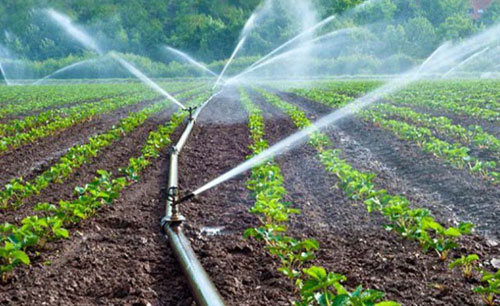Water-intensive food crops like sugarcane and rice require large quantities of water. Their water recovery rate is among the lowest in the world. Pakistan uses 80% of its groundwater reserves for growing sugarcane. Rice production in India consumes water faster than it is replenished.
Depending on the location of your home, you might have to purchase an STP to handle your sewage. Generally, residential buildings need at least one STP to treat sewage. Many STPs are located underground, making them difficult to maintain. Moreover, you may not be able to inspect them without hiring an expert. It is better to consult a professional if you have any doubts about the process.
U.S. imports of rice from South Asia
The U.S. rice industry uses more water than any other food source, so the impact on water availability is considerable. The Asia-Pacific region, which is home to 56 per cent of the world's population, adds 51 million additional rice consumers annually. To meet the growing demand, the region must increase its production by nearly seven times its current level. While this will require less land, fewer people, and more water, it will also require more fertilizer and pesticides than the U.S. market currently uses. In addition, increased rice production will result in higher water resources and fertilizer costs, which are already limited.
The growth rate of rice output in major producing countries has increased over the last half-century. This increase has far exceeded the growth rate in the region's population. However, the growth rate of modern rice varieties and fertilizers has plateaued, while the area planted with rice has grown by 0.4 per cent annually.
Increase in U.S. rice production in the South

Increased rice production in the South can be beneficial for local farmers. Salt-tolerant varieties of grain are available. They are ideal for marginal lands inundated with salt water. They may also improve the health of the soil. Researchers at Clemson University are exploring the feasibility of planting this type of rice in the South. The project will be conducted for four years.

Freshwater scarcity, measured as the ratio of water footprint to the water available, has become an increasingly important issue worldwide. While the lack of green and blue water is a concern for the environment, the issue has become even more pressing as the world's population continues to increase. About one-third of the world's population currently lives in regions with water shortages.
Increase in U.S. rice imports from the Middle East
The United States has increased its rice imports from Middle East nations in recent years. These rice imports represent about 25 per cent of the U.S. market, up from about 10 per cent at the turn of the century. Most of these imports are aromatic rice varieties from Asia, such as basmati and jasmine rice.
Despite this growth, the United States has lost some market share to the E.U., which buys U.S. rice and fully mills it before shipping it to markets in the region.
While U.S. quotas for Asian countries are not fully utilized, California is expected to fulfil at least half of Japan's quota in the 2022 crop. In contrast, imports to South Korea are unlikely to reach the level of domestic consumption. In addition, rice imported from these countries will likely need to be re-bagged and processed in California.
Impact of blue water scarcity on water availability
Bluewater is an essential water resource in our ecosystem. We use this water for our human activities, and a portion of it gets redirected back to the soil. The amount of blue water available in a given month varies depending on the ecosystem. The availability of blue water is measured in cubic meters per month. In a drought year, this water is insufficient to support crop production, and we must find additional water sources for irrigation. However, even a small amount of blue water could be enough in wet years to meet crop water needs.
To understand the extent of blue water scarcity, we must consider its interactions with green water and groundwater. The Blue Water Index (BWI) is a tool that measures the amount of blue water compared to its runoff and consumption components.
Impact of virtual water trade on food supply
Virtual water trade represents the global movement of large volumes of water embedded in agricultural products. The volume of virtual water represents the total amount of water used by a crop during its growth cycle. This provides an interesting perspective on the water flow in major agricultural countries.
There are several challenges to the water trade, however. One of these challenges is the need to account for the in and out-flow of virtual water properly. Assuming that water is not a scarce commodity, the trade in virtual water would encourage water-efficient agricultural practices and water-dependent economic activity in water-rich areas.
Virtual water trade data can also be used to construct water satellite accounts and incorporate them into economic models of international trade. These models, such as the GTAP Computable General Equilibrium (GCM), can determine the economic impacts of water supply, agricultural policies, and trade liberalization.







































Share Post